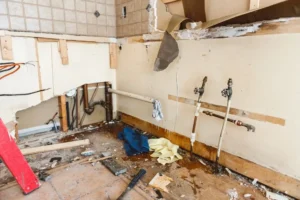Learning your home may have mold can be overwhelming. Not only does it affect the structural integrity of your property, but it also poses significant health risks, especially to those with allergies and respiratory issues. The first step to managing this issue effectively is getting professional mold testing.
In this post we’re going to take you through the essentials of mold detection, highlighting the importance of identifying mold early and effectively. We’ll look at some common signs that mold is present, and what testing may entail. In the end, you’ll know why working with the leader in mold testing in Georgetown, TX is crucial to your home’s health.
A Closer Look at Mold and Its Risks
Mold is more than just some discoloration and a funky odor. Commonly found in places like bathrooms, basements, and kitchens, mold can grow on any porous surface, like walls, ceilings, and personal belongings. It reproduces through spores that can easily spread through the air, making it challenging to eradicate.
The risks associated with mold exposure can range from minor irritations to serious health problems. For some, it may trigger allergies, causing symptoms like sneezing, itching, and respiratory distress. For others, particularly those with compromised immune systems or chronic lung conditions, mold exposure can lead to more severe infections and health complications.
In Georgetown, TX, the climate can contribute to the prevalence of mold in homes, making it essential for residents to be vigilant about mold detection and removal. Understanding the nature of mold and the risks it poses is the first step in combating it and protecting your property and health.
Signs Your Home Has Mold
Sometimes just knowing what to look for can help prevent it from becoming a larger issue. Here are some common signs that may indicate the presence of mold:
- Musty Odors: A persistent musty or earthy smell is often the first indicator of hidden mold.
- Visible Growth: While mold comes in various colors and forms, any unexplained discoloration or fuzzy growth on surfaces can be a sign.
- Water Damage: Areas with water damage, such as peeling paint, warped floors, or stained ceilings, are likely spots for mold growth.
- Health Symptoms: Experiencing sudden allergic reactions, such as sneezing, coughing, or eye irritation, especially in specific areas of your home, can signal mold presence.
In Georgetown, TX, the humidity levels can create the exact environment where mold thrives, making these signs crucial to watch for
Step-by-Step Guide to Testing for Mold
Begin with a thorough visual inspection of your home, especially in areas where moisture accumulates like bathrooms, kitchens, and basements. Look for visible signs of mold growth or water damage. If you’re going to use a DIY kit, you can typically purchase a mold testing kit from a hardware store.
If visible mold is present, you can collect a sample using a swab and send it to a laboratory for analysis. This will identify the mold species and determine the appropriate remediation steps. If you suspect extensive mold growth or are unable to identify the source, hiring a professional like RestoTek for a comprehensive mold assessment is a smart move.
RestoTek’s Role in Mold Assessment
While DIY methods can be effective for minor mold issues, extensive or hidden mold infestations require professional intervention. RestoTek specializes in identifying, assessing, and resolving mold problems, ensuring a comprehensive approach to mold abatement.
RestoTek’s experts in Georgetown, TX, use advanced techniques for water damage assessments, structural drying, water removal, and mold remediation. Our approach ensures that mold is not only removed but that the underlying moisture problem is also addressed, preventing future growth and protecting your property and health. If your home needs help with mold, reach out to RestoTek today.



